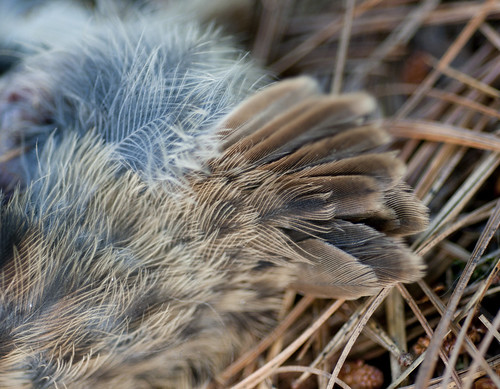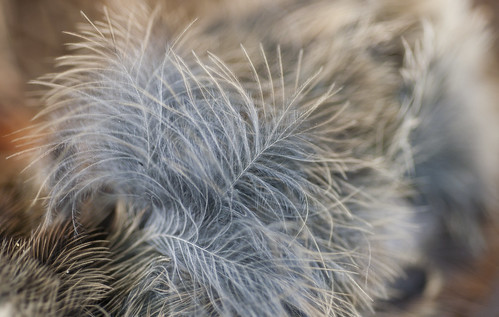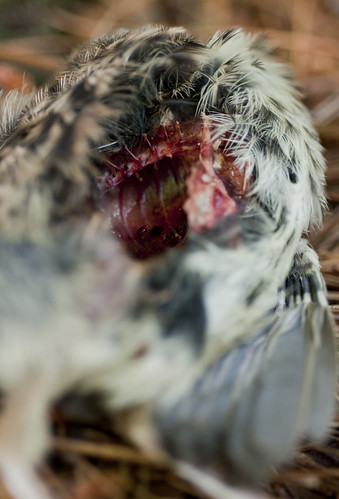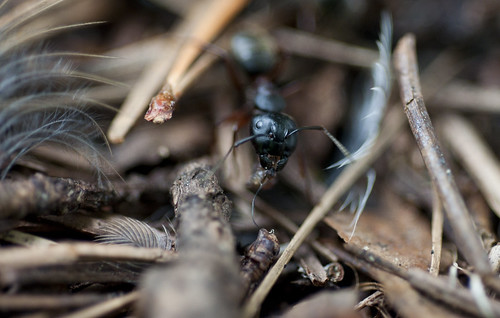I was immediately struck by how small the tail was compared to the rest of the body. At the same time, its legs and feet were disproportionately large —a tell-tale sign of a young bird. There was a bit of a gape remaining at the corners of its beak and its feathers were mismatched, as they'd still been growing in at the time of the bird's death. The down was very soft, almost fur-like.
One wing was missing, as was most of the inside of the bird. I'm unsure of what killed this sparrow; it's easy to blame the cats that wander our street and backyard, as they've brought down birds on our property before, but I have a hunch it wasn't a cat that did this. The raccoons and foxes have been quite active in our area as of late, and one of them could very well have been the culprit, too.
I'm not quite certain what species of sparrow this was. With fledglings, it can be especially difficult to tell sparrows apart, but I'm leaning toward song sparrow (Melospiza melodia).
After I finished photographing it, I left the body near where the robin was entombed by burying beetles last month. This evening, I paid a visit, only to find that an entirely different insect was busy attending to the corpse:
Ants! Several dozen large ants were chewing away at the sparrow, carrying away bits of flesh. The head of the bird was nearly reduced to just the skull; no fly eggs were to be seen. In this case, the body belonged to the ants — not the beetles, nor the flies.










Ants may be small, but there are a lot of them at work!
ReplyDelete